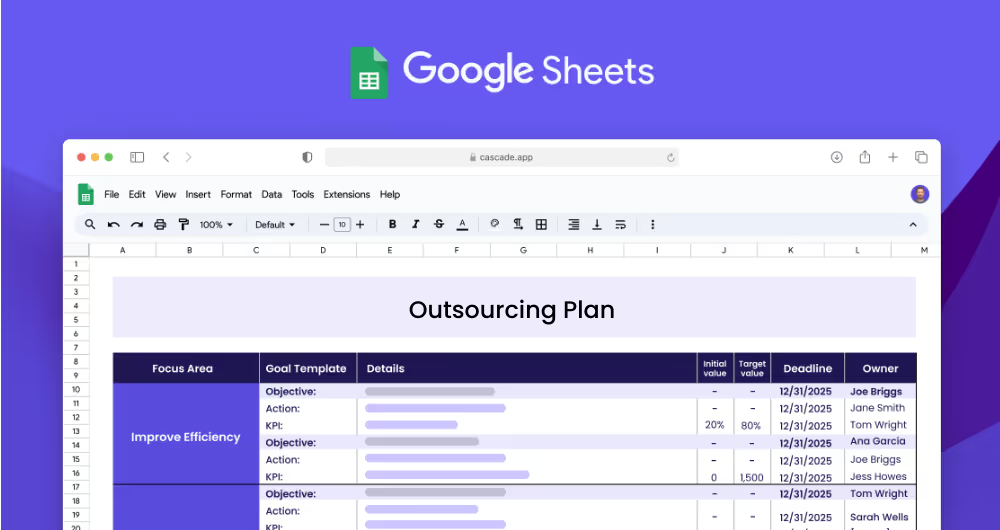An outsourcing plan is a strategic plan developed to identify and manage any external services, resources, and activities related to a business. It outlines the goals, objectives, and key performance indicators (KPIs) that need to be achieved in order to successfully outsource operations and activities. This plan also outlines the actions required to achieve the desired results and the cost savings associated with the plan.
Each focus area has its own objectives, projects, and KPIs to ensure that the strategy is comprehensive and effective.
This Outsourcing Plan template is designed for teams of any size, from small startups to large corporations, and for any industry. This template is an easy-to-use guide to help you create a plan that identifies and manages your outsourcing activities.
The first step in creating an outsourcing plan is to define the focus areas. A focus area is a broad area of business operations that you want to outsource. Examples of focus areas include identifying and evaluating outsourcing opportunities, managing and monitoring outsourcing contract performance, and monitoring and controlling outsourcing costs.
Once the focus areas are identified, the next step is to think about the objectives that could fall under those focus areas. Objectives are specific goals that you want to achieve in order to reach the desired results or cost savings. Examples of objectives can include establishing clear criteria for outsourcing, analyzing cost savings, establishing performance metrics, and monitoring performance.
Once the objectives are identified, the next step is to set measurable targets (KPIs) to tackle the objectives. Key performance indicators (KPIs) are measurable targets that you set to track the progress of your objectives. Examples of KPIs can include the number of criteria established, the cost savings per month, the number of performance metrics established, and the percentage of performance metrics met.
The fourth step in creating an outsourcing plan is to implement related projects to achieve the KPIs. Projects, or actions, are the specific activities that need to be completed in order to meet the objectives and KPIs. Examples of projects can include developing a list of criteria for evaluating potential outsourcing opportunities, analyzing potential cost savings of outsourcing, developing a set of metrics to measure the performance of the contract, and developing cost control mechanisms to ensure the contract is cost effective.
If you’re ready to accelerate your strategy and see faster results, consider using Cascade Strategy Execution Software. Unlike spreadsheets, Cascade provides a streamlined platform designed to help you create, track, and execute your strategy with ease. Sign-up for free or book a demo with one of our strategy experts to get started today!


